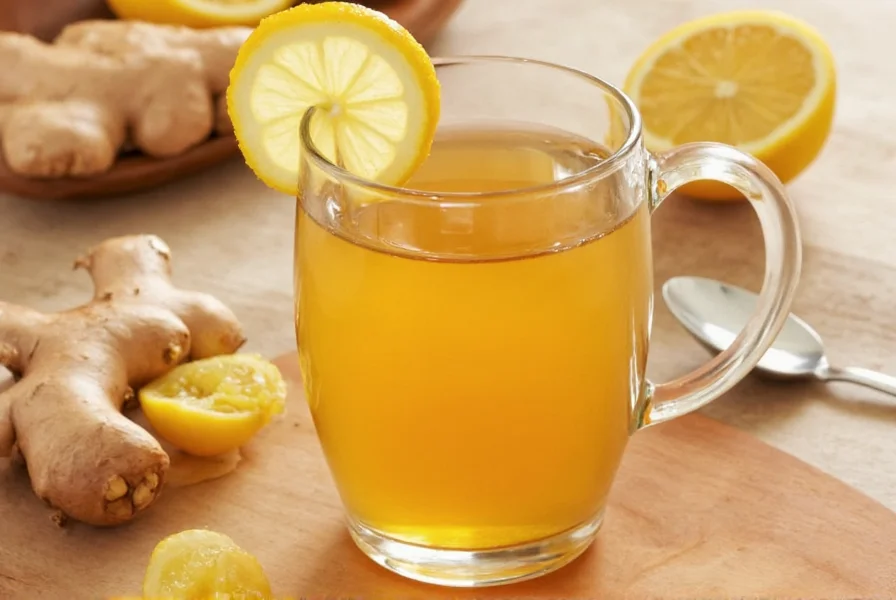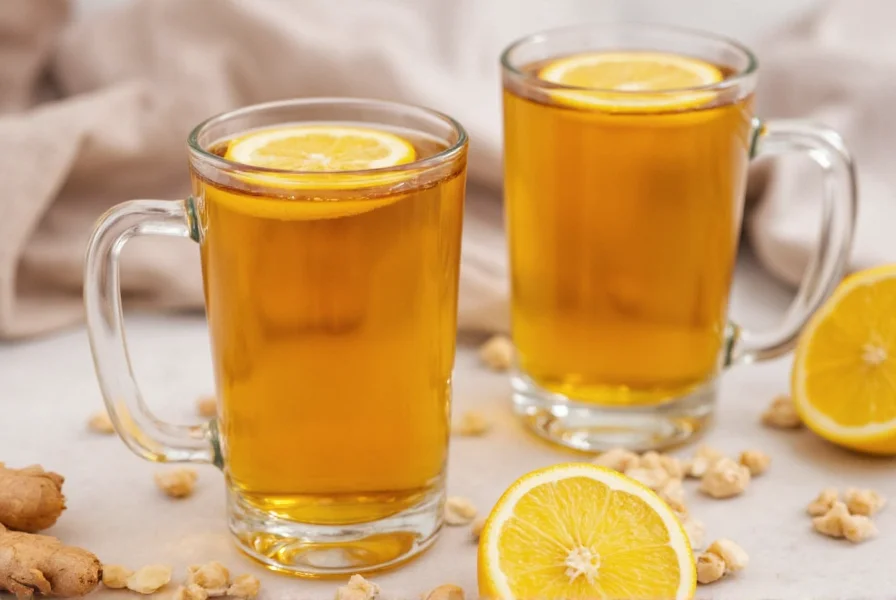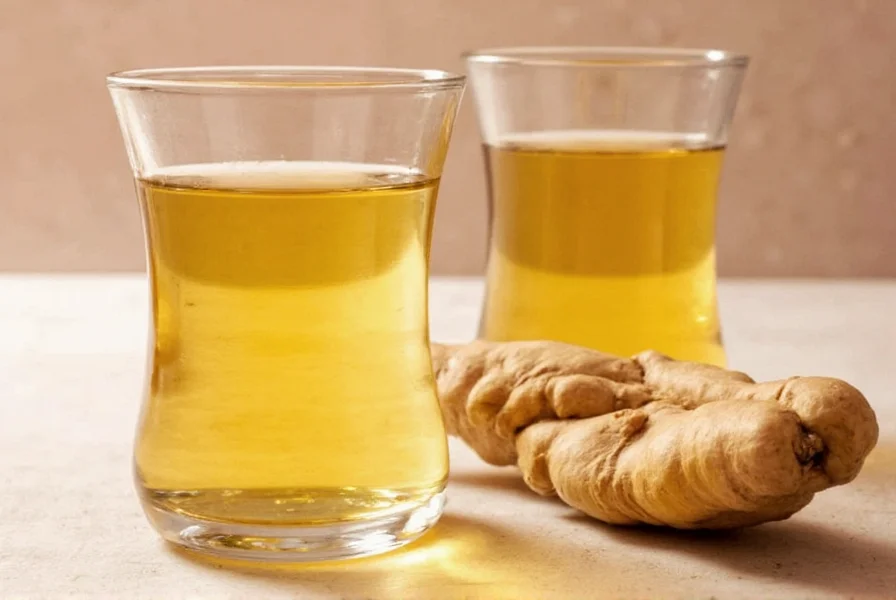Creating the perfect cup of homemade ginger tea requires understanding both the preparation techniques and the properties of this versatile root. Unlike store-bought versions that may contain artificial flavors or excessive sugar, authentic ginger tea harnesses the natural compounds in fresh ginger for a more potent and customizable experience. Whether you're seeking relief from occasional digestive discomfort or simply want a caffeine-free beverage option, mastering the art of ginger tea preparation delivers both immediate satisfaction and potential wellness benefits.
The Science Behind Ginger's Benefits
Ginger contains bioactive compounds like gingerol, which research suggests may support digestive health and provide antioxidant effects. When preparing homemade ginger tea, the extraction process releases these compounds into the water. The concentration depends on preparation methods—longer boiling times increase potency but may also create a more intense flavor. Understanding how to make homemade ginger tea with optimal extraction helps maximize potential benefits while maintaining palatability.
Essential Ingredients for Authentic Ginger Tea
The foundation of exceptional ginger tea starts with quality ingredients:
- Fresh ginger root - Look for firm, smooth-skinned rhizomes with no soft spots
- Purified water - Ensures clean flavor without impurities
- Natural sweeteners (optional) - Raw honey or maple syrup
- Complementary flavors - Fresh lemon slices, mint leaves, or a cinnamon stick
Avoid using pre-ground ginger powder for traditional preparation, as fresh root provides superior flavor and potentially higher concentrations of active compounds. The fresh ginger tea recipe relies on the natural oils and compounds present in the whole root.
| Preparation Method | Boiling Time | Water Temperature | Resulting Flavor Profile |
|---|---|---|---|
| Basic Simmer | 10 minutes | 200°F (93°C) | Mild, approachable |
| Extended Boil | 15-20 minutes | 212°F (100°C) | Strong, spicy |
| Cold Brew | 4-8 hours | Room temperature | Subtle, refreshing |
Step-by-Step Preparation Guide
Follow these steps for the ideal ginger lemon honey tea recipe that balances flavor and potential wellness properties:
- Prepare the ginger - Wash 1-2 inches of fresh ginger root thoroughly. You can peel it (for milder flavor) or leave the skin on (for stronger taste and additional nutrients).
- Cut or grate - Slice thinly for gradual flavor release or grate coarsely for more intense extraction.
- Boil water - Bring 2-3 cups of filtered water to a rolling boil in a non-reactive pot.
- Add ginger - Place prepared ginger in the boiling water.
- Simmer - Reduce heat and let simmer uncovered for 10-15 minutes (adjust time based on desired strength).
- Strain and enhance - Remove ginger pieces and add 1 tablespoon fresh lemon juice and 1 teaspoon raw honey (optional).
- Enjoy - Drink warm, preferably in the morning or after meals for optimal ginger tea for digestion benefits.

Variations for Different Needs
Tailor your ginger tea preparation method to suit specific wellness goals:
- Digestive support blend - Add 1/4 teaspoon fennel seeds during the last 5 minutes of boiling
- Immune-boosting version - Include 2-3 thin slices of turmeric root and a pinch of black pepper
- Cold-relief tea - Increase ginger quantity to 3 inches and add 1/2 teaspoon crushed peppercorns
- Calming evening tea - Reduce ginger to 1 inch and add 1 teaspoon dried chamomile flowers
Timing and Consumption Guidelines
Understanding when to drink ginger tea maximizes potential benefits:
- Morning: Helps stimulate digestion and provides gentle energy
- Before meals: May support digestive enzyme production
- After meals: Can aid in digestion of heavier foods
- Evening: Opt for milder preparations to avoid potential sleep disruption
Most adults can safely enjoy 1-3 cups daily, though individual tolerance varies. Those with specific health conditions should consult healthcare providers about appropriate consumption levels.
Potential Considerations and Side Effects
While generally safe, some individuals should exercise caution with ginger tea. The ginger tea side effects may include mild heartburn or stomach upset in sensitive individuals, particularly when consumed in large quantities. People taking blood-thinning medications, those with gallstone issues, or individuals scheduled for surgery should discuss ginger consumption with their healthcare provider beforehand.
Pregnant women can typically enjoy moderate amounts of ginger tea for nausea relief, but should consult their obstetric provider about appropriate quantities. The American College of Obstetricians and Gynecologists considers up to 1 gram of ginger daily safe during pregnancy for nausea management.

Storage and Freshness Tips
For best results, consume homemade ginger tea immediately after preparation. If you need to store it:
- Refrigerate in airtight container for up to 3 days
- Freeze in ice cube trays for longer storage (up to 3 months)
- Reheat gently without boiling to preserve flavor compounds
- Always check for off smells or cloudiness before consuming leftovers
Prepared ginger tea loses some volatile compounds over time, so freshly made tea delivers the most robust flavor and potential benefits. For convenience, you can prepare a ginger concentrate by boiling ginger in reduced water, then diluting with hot water when ready to drink.
Frequently Asked Questions
How much ginger should I use for one cup of tea?
For a single serving, use approximately 1/2 to 1 inch of fresh ginger root. This provides sufficient flavor without being overpowering for most palates. If you're new to ginger tea, start with the smaller amount and adjust to your taste preference in subsequent preparations.
Can I drink ginger tea on an empty stomach?
Yes, many people drink ginger tea first thing in the morning to stimulate digestion. However, those with sensitive stomachs may prefer consuming it with a small snack. If you experience discomfort, try having a few crackers before your ginger tea.
How long does homemade ginger tea stay fresh?
Properly stored in a sealed container in the refrigerator, homemade ginger tea maintains best quality for 2-3 days. For longer storage, freeze in ice cube trays and transfer to freezer bags. Thaw individual portions as needed, though some flavor compounds may degrade over time.
Is homemade ginger tea better than store-bought versions?
Homemade ginger tea typically contains higher concentrations of active compounds since it's made from fresh ingredients without preservatives. Commercial versions often use ginger powder or extracts with potentially lower potency. Making your own allows complete control over ingredients and strength, avoiding added sugars or artificial flavors common in bottled versions.
Can children drink ginger tea?
Children over 2 years can typically enjoy diluted ginger tea in small quantities (1/4 to 1/2 cup). Use less ginger (about 1/4 inch per cup of water) and ensure it's not too hot before serving. Consult a pediatrician before giving ginger tea to children with health conditions or those under 2 years old.











 浙公网安备
33010002000092号
浙公网安备
33010002000092号 浙B2-20120091-4
浙B2-20120091-4